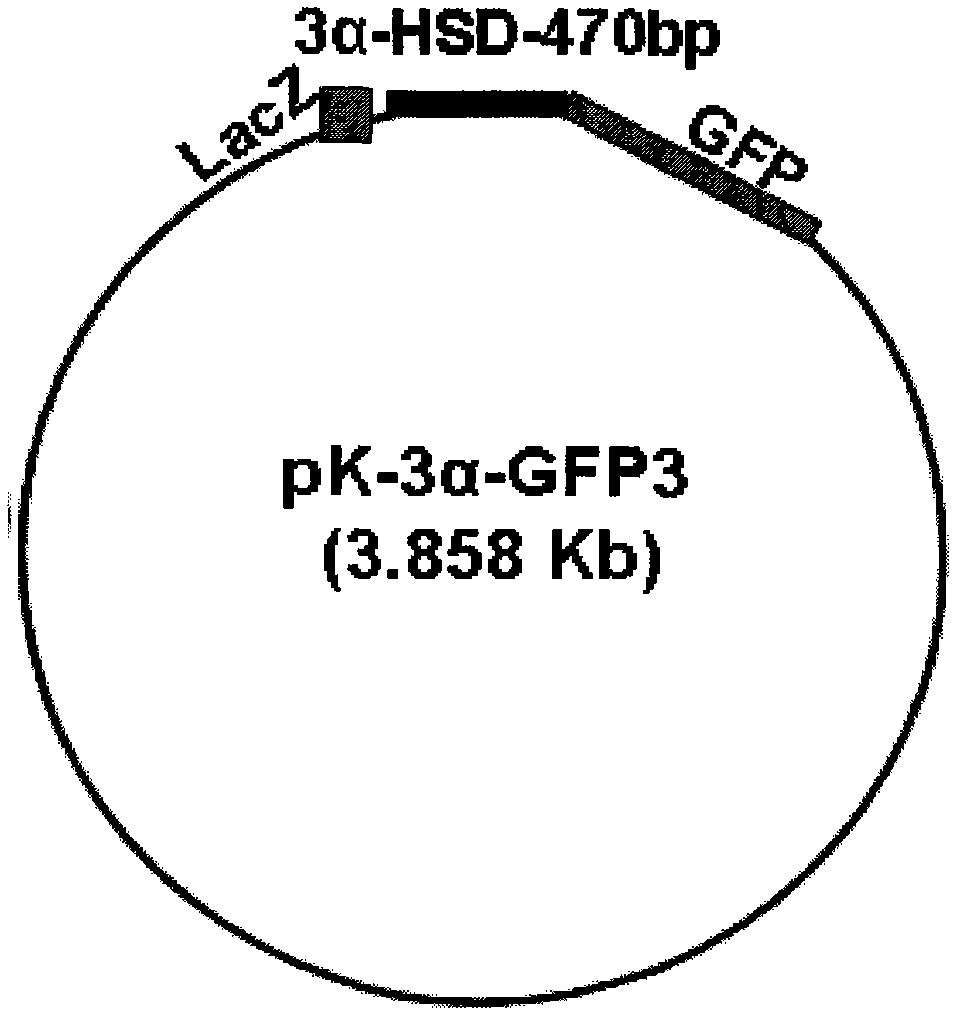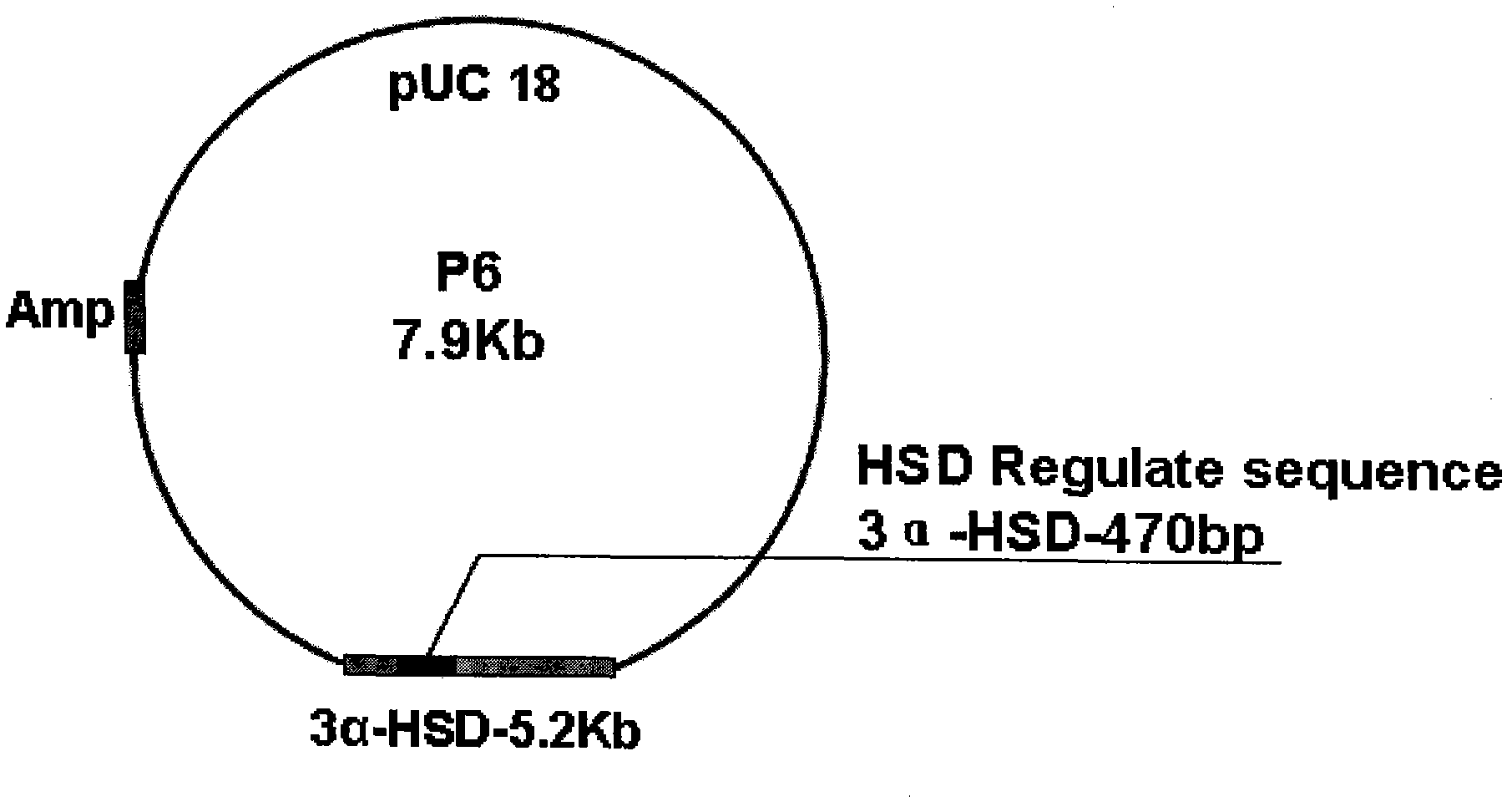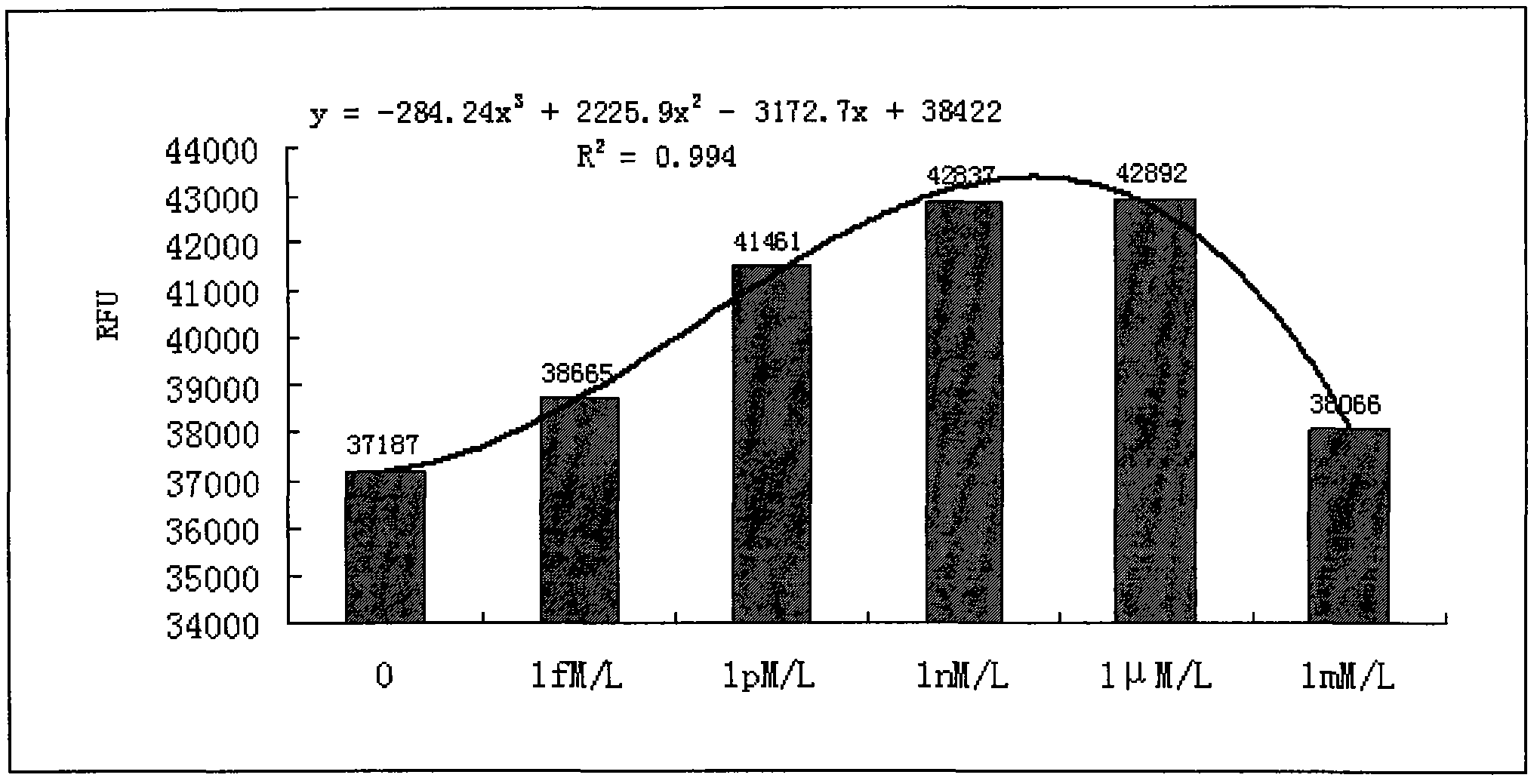Anabolic steroids and polycyclic aromatic hydrocarbon high-efficiency bioluminescence sensor and construction method thereof
A fluorescent sensor and polycyclic aromatic hydrocarbon technology, applied in the field of molecular biology, can solve the problems of long detection period, high cost, low sensitivity, etc., and achieve the effect of low instrument requirements, wide detection linear range, and simple technical operation
- Summary
- Abstract
- Description
- Claims
- Application Information
AI Technical Summary
Problems solved by technology
Method used
Image
Examples
Embodiment 1
[0025] Example 1 Taking testosterone as an example to establish a bioluminescence detection standard curve
[0026] 1. Preparation of cell plasma in acellular system:
[0027] (1) Transform the plasmid pK-3α-GFP3 into Escherichia coli, and cultivate it in a constant temperature shaking incubator at 37°C at 180-200 rpm for 12 to 14 hours, and inoculate the cultured Escherichia coli at a volume ratio of 1:20 Cultivate in SIN medium at 37°C, 180-200 rpm in a constant temperature shaking incubator until OD595=3.0, centrifuge the cultured bacteria at 4000 rpm for 20-30 minutes, discard the supernatant, add sterile water to wash the bacteria , centrifuge at 4000 rpm for 20-30 minutes, discard the supernatant, repeat washing twice, add sterile water and a final concentration of 100 μg / mL lysozyme, resuspend the bacteria, freeze and thaw three times at -20°C to 25°C, Centrifuge at 10,000 rpm for 20-30 minutes, and take the supernatant as the prepared acellular system cytoplasm (can b...
Embodiment 2
[0037] Example 2 Taking estradiol as an example to establish a bioluminescence standard detection curve
[0038] 1. Preparation of cell plasma in acellular system:
[0039] (1) Transform the plasmid pK-3α-GFP3 into Escherichia coli, and cultivate it in a constant temperature shaking incubator at 37°C at 180-200 rpm for 12 to 14 hours, and inoculate the cultured Escherichia coli at a volume ratio of 1:20 In SIN medium, cultivate to OD in 37°C, 180-200rpm constant temperature shaking incubator 595= 3.0, centrifuge the cultured cells at 4000 rpm for 20-30 minutes, discard the supernatant, add sterile water to wash the cells, centrifuge at 4000 rpm for 20-30 minutes, discard the supernatant, repeat washing twice, add sterile Bacterial water and a final concentration of 100 μg / mL lysozyme, resuspended bacteria, repeated freezing and thawing three times at -20°C to 25°C, centrifuged at 10,000 rpm for 20 to 30 minutes, and the supernatant was the prepared acellular system cytoplasm ...
Embodiment 3
[0049] Embodiment 3 takes naphthalene as an example to establish a bioluminescence standard detection curve
[0050] 1. Preparation of cell plasma in acellular system:
[0051] (1) Transform the plasmid pK-3α-GFP3 into Escherichia coli, and cultivate it in a constant temperature shaking incubator at 37°C at 180-200 rpm for 12 to 14 hours, and inoculate the cultured Escherichia coli at a volume ratio of 1:20 In SIN medium, cultivate to OD in 37°C, 180-200rpm constant temperature shaking incubator 595 = 3.0, centrifuge the cultured cells at 4000 rpm for 20-30 minutes, discard the supernatant, add sterile water to wash the cells, centrifuge at 4000 rpm for 20-30 minutes, discard the supernatant, repeat washing twice, add sterile Bacterial water and a final concentration of 100 μg / mL lysozyme, resuspended bacteria, repeated freezing and thawing three times at -20°C to 25°C, centrifuged at 10,000 rpm for 20 to 30 minutes, and the supernatant was the prepared acellular system cytop...
PUM
 Login to View More
Login to View More Abstract
Description
Claims
Application Information
 Login to View More
Login to View More - Generate Ideas
- Intellectual Property
- Life Sciences
- Materials
- Tech Scout
- Unparalleled Data Quality
- Higher Quality Content
- 60% Fewer Hallucinations
Browse by: Latest US Patents, China's latest patents, Technical Efficacy Thesaurus, Application Domain, Technology Topic, Popular Technical Reports.
© 2025 PatSnap. All rights reserved.Legal|Privacy policy|Modern Slavery Act Transparency Statement|Sitemap|About US| Contact US: help@patsnap.com



